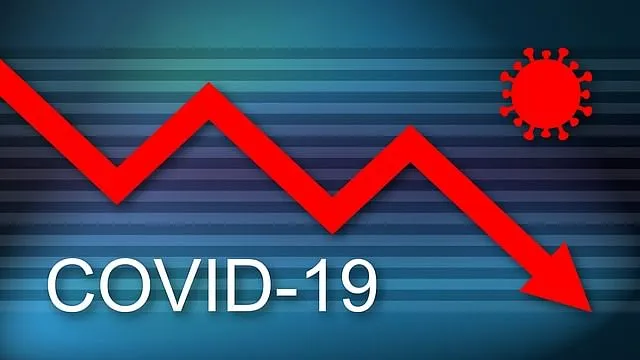Srinagar, June 16: Cases of COVID-19 have not fluctuated remarkably in the past 10 days in J&K and the curve is now almost flat. The trend has proved few projections regarding the behaviour of the pandemic grossly wrong, fortunately.
Cases of COVID-19 are steadily decreasing in J&K. Since 10 June, there has been a seamless drop of 50 to 100 cases per day. The average daily positive percentage has also fallen below 2 percent now, as against over 12 percent in the middle of May when J&K recorded its highest single day spikes – known as the peak of the current second wave. The highest single day tally was reported on 07 May when 5443 new cases came to fore. There onwards, cases dropped steeply up to the end of May. From the beginning of June, there has been little variation in the case tally.
In May, many projections about the peak time and value were made. However, the recorded stats about case load and fatality have fortunately proved these projections wrong.
Prof MS Khuroo, Chairman of the Apex Level Advisory Committee of Government of Jammu and Kashmir for COVID-19 and also for Third Wave preparation had estimated that J&K will reach its peak over the end of May. He had said in an interview that J&K was “likely to witness 6,000 to 10,000 cases, 60 to 100 deaths per day”. However, J&K’s peak value was around 5500 on 07 May and deaths peaked at 73 on 17 May. Dr Rouf Hussain Rather, who specializes in epidemiology & community medicine and currently working in Kashmir’s Divisional level COVID-19 control room had also estimated that J&K would peak around the end of May and the curve would flatten thereon. Although the peak was reached earlier, the flattening of the curve did start after the first week of June. Dr Rather had earlier correctly estimated that J&K would see a spike in cases around mid-April. Many other projections, models and estimates had been made regarding the toll and tally of the pandemic in the UT. While calling his estimates accurate, Dr Khuroo said J&K was saved by the warning and the lockdown. “It tamed the surge as expected,” he said. He said that J&K reached around 6000 cases and 70 deaths and short of lockdown “it could have been a disaster”.
Prof S Saleem Khan, head department of Social and Preventive Medicine at GMC Srinagar, had said the lockdown would spread cases over a longer period of time and actual value of cases was difficult to project. While talking to the Greater Kashmir on Wednesday, he said, projections and mathematical models “almost always fail” as they project behavior of the virus while many other variables factor in. “Mutations caused the spike earlier than expected,” he said. He said that the behavior of viruses and the behavior of the public could skew the graphs to either side.
Dr Rouf H Rather said peaks are of many types. “There is a peak in cases, a peak in active cases, a peak in tests, a peak in deaths and a peak in positive percentage,” he said. He said peaks in deaths and active cases were “most significant”. “We certainly had a couple of important peaks over the third week of May,” he said.






